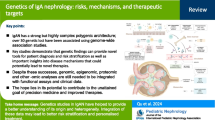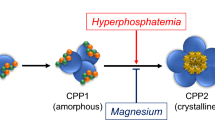Abstract
Nitric oxide (NO) is a very potent regulator of intrarenal hemodynamics and is thought to be an important factor in the deterioration of renal function. Several polymorphisms of the endothelial NO synthase (eNOS) gene have been reported. For instance, tandem 27-bp repeats in intron 4 of the eNOS gene are polymorphic, i.e. eNOS4a allele has 4 and eNOS4b has 5 tandem repeats, and the association between eNOS4a and myocardial infarction has been reported. In addition, a missense Glu298Asp mutation in exon 7 of the eNOS gene is reported to be a risk factor for hypertension or myocardial infarction. In this study, we investigated the frequencies of these 2 polymorphisms of eNOS gene in patients with end-stage renal diseases (ESRD), and compared them with those of healthy subjects.
Genomic DNA was obtained from regularly hemodialyzed patients and healthy volunteers. The allele frequencies of eNOS4a and eNOS4b in intron 4 were analyzed by PCR and the missense Glu298Asp mutation in exon 7 were determined by PCR FMLP analysis.
The allele frequency of eNOS4a (eNOS4a/b and eNOS4a/a) in non-diabetic group is significantly higher than that in healthy controls (27.3% vs. 19.0%, p = 0.01) though there is no significant difference between diabetic group and healthy controls. On the other hand, the frequencies of missense Glu298Asp mutation in both non-diabetic and diabetic groups are significantly higher than that in healthy controls (22.5% in non-diabetic, 20.8% in diabetic and 7.4% in control group, p = 0.002: non-diabetic vs. control, p = 0.01: diabetic vs. control).
This study clarified that the polymorphisms in intron 4 and exon 7 of eNOS gene are the genetic risk factors for ESRD. The polymorphisms in intron may change the transcriptional activity and those in exon may alter the 3 dimensional structure of the enzyme, and may affect the progression of renal diseases via decreased NO synthesis. Further study is required to clarify the detailed mechanisms.
Similar content being viewed by others
References
Zate R, De Nucci G: Effects of acute nitric oxide inhibition on rat glomerular microcirculation. Am J Physiol 261: F360-F363, 1991
Tolins JP, Palmer RMJ, Moncada S, Raij L: Role of endothelium-derived relaxing factor in regulation of renal hemodynamic responses. Am J Physiol 258: H655-H662, 1990
Miyahara K, Kawamoto T, Sase K et al.: Cloning and structural characterization of the human endothelial nitric-oxide-synthase gene. Eur J Biochem 233: 719-726, 1994
Nadaud S, Bonnardeaux A, Lathrop M, Soubrier F. Gene structure polymorphism and mapping of the human endothelial nitric oxide synthase gene. Biochem Biophys Res Commun 198: 1027-1033, 1994
Bonnardeaux A, Nadaud S, Charru A, Jeunemaitre X, Corvol P, Soubrier F: Lack of evidence for linkage of the endothelial cell nitric oxide synthase gene to essential hypertension. Circulation 91: 96-102, 1995
Wang XL, Sim AS, Badenhop RF, Mccredie RM, Wilcken DEL: A smoking-dependent risk of coronary artery disease associated with a polymorphism of the endothelial nitric oxide synthase gene. Nature Med 2: 41-45, 1996
Ichihara S, Yamada Y, Fujimura T, Nakashima N, Yokota M: Association of a polymorphism of the endothelial constitutive nitric oxide synthase gene with myocardial infarction in the Japanese population. Am J Cardiol 81: 83-86, 1998
Miyamoto Y, Saito Y, Kajiyama N, Yoshimura M, Shimasaki Y, Nakayama M, Kamitani S, Harada M, Ishikawa M, Kuwahara K, Ogawa E, Hamanaka I, Takahashi N, Kaneshige T, Teraoka H, Akamizu T, Azuma N, Yoshimasa Y, Yoshimasa T, Itoh H, Masuda I, Yasue H, Nakao K: Endothelial nitric oxide synthase gene is positively associated with essential hypertension. Hypertension 32: 3-8, 1998
Shimasaki Y, Yasue H, Yoshimura M, Nakayama M, Kugiyama K: Association of the missense Glu298Asp variant of the endothelial nitric oxide synthase gene with myocardial infarction. J Am Coll Cardiol 31: 1506-1510, 1998
Yoshimura M, Yasue H, Nakayama M, Shimasaki Y, Sumida H, Sugiyama S, Kugiyama K, Ogawa H, Ogawa Y, Saito Y, Miyamoto Y, Nakao K: A missense Glu298Asp variant in the endothelial nitric oxide synthase gene is associated with coronary spasm in the Japanese. Hum Genet 103: 65-69, 1998
Yokoyama K, Tsukada T, Matsuoka H, Hara S, Yamada A, Kawaguchi Y: High accumulation of endothelial nitric oxide synthase (ecNOS): A gene polymorphism in patients with end-stage renal disease. Nephron 79: 360-361, 1998
Tsukada T, Yokoyama K, Arai T et al.: Evidence of association of the ecNOS gene polymorphism with plasma NO metabolite levels in humans. Biochem Biophys Res Commun 245: 190-193, 1998
Miller JA, Floras JS, Zinman B, Skorecki KL, Logan AG: Abnormalities in the renal and vascular responses to LBNP in humans with early diabetes. Am J Physiol 266: R442-R450, 1994
Wang YX, Brooks DP, Edwards RM: Attenuated glomerular cGMP production and renal vasodilation in streptozotocin-induced diabetic rats. Am J Physiol 264: R952-R956, 1993
Taylor PD, McCarthy AL, Thomas CR, Poston L: Endothelium-dependent relaxation and noradrenaline sensitivity in mesenteric resistance arteries of streptozotocin-induced diabetic rats. Br J Pharmacol 107: 393-399, 1992
Tolins JP, Shultz PJ, Raij L, Brown DM, Mauer SM: Abnormal renal hemodynamic response to reduced renal perfusion pressure in diabetic rats: Role of NO. Am J Physiol 265: F886-F895, 1993
Bank N, Aynedjian HS: Role of EDRF (nitric oxide) in diabetic renal hyperfiltration. Kidney Int 43: 1306-1312, 1993
Komers R, Allen TJ, Cooper ME: Role of endothelium-derived nitric oxide in the pathogenesis of the renal hemodynamic changes of experimental diabetes. Diabetes 43: 1190-1197, 1994
Mattar AL, Fujihara CK, Ribeiro MO, De Nucci G, Zatz R: Renal effects of acute and chronic nitric oxide inhibition in experimental diabetes. Nephron 74: 136-143, 1996
Steffes MW, Østerby R, Chavers B, Mauer SM: Mesangial expansion as a central mechanism for loss of kidney function in diabetic patients. Diabetes 38: 1077-1081, 1989
Florin TH, Neale G, Cummings JH: The effect of dietary nitrate on nitrate and nitrite excretion in man. Br J Nutr 64: 387-397, 1990
Author information
Authors and Affiliations
Rights and permissions
About this article
Cite this article
Nagase, S., Suzuki, H., Wang, Y. et al. Association of ecNOS gene polymorphisms with end stage renal diseases. Mol Cell Biochem 244, 113–118 (2003). https://doi.org/10.1023/A:1022473405275
Issue Date:
DOI: https://doi.org/10.1023/A:1022473405275




